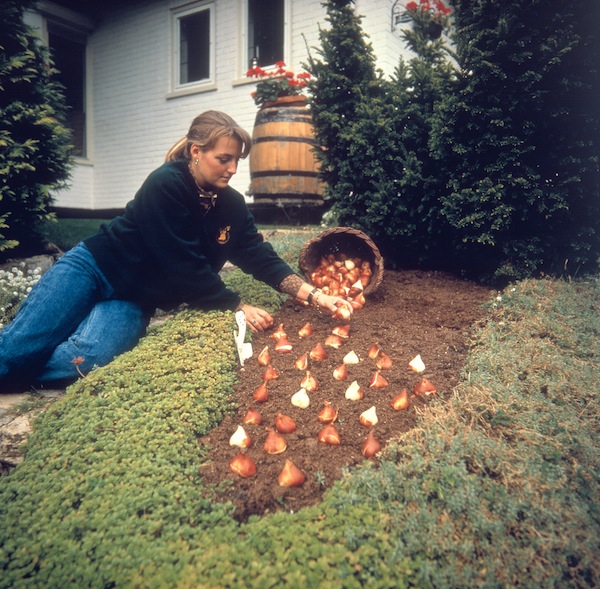
Plant spring bloom bulbs in clusters or swaths for the best show. Photo courtesy Netherlands Flower Bulb Information Center
As summer winds down, we’re thinking two seasons ahead. That’s because a lot of spring color comes from bulbs, which are planted this time of year for enjoyment months away.
Just like sports, bulbs are major or minor players. The majors include daffodils, Dutch hyacinths, lilies, tulips, bluebells and Indian hyacinths. Crocus, grape hyacinths, glory of the snow, scilla and wind anemones are some of the minors. (The Dutch call them special bulbs.)
For the best show, buy the largest bulbs you can afford. When selecting daffodils, look for bulbs that have two growing points, called noses. Don’t be alarmed if the tulip’s outer skin, called a tunic, peels off. It won’t hurt anything. For naturalizing, smaller bulbs, including miniature daffodils and species tulips, work well.
Here are some more tips.
- Plant spring bulbs in fall so that they have at least six weeks to develop roots before the ground freezes.
- Spring bulbs do not need fertilizer when planted because they are packed with everything they need to grow the first season. Apply an all purpose fertilizer or dusting of compost in spring when their leaves break ground and again after they are done blooming.
- Plant bulbs three to four times deeper than their height. If a bulb is 2 inches tall, plant it 6 to 8 inches deep.
- Water the newly planted bulbs and mulch.
- If squirrels, chipmunks and other critters are a problem, wrap clusters of bulbs in hardware cloth or chicken wire before planting. Animals, including deer, do not seem to bother daffodils, which are poisonous.
- Dig one hole wide enough to accommodate several bulbs rather than individual holes.
- In spring, allow the foliage to turn yellow or brown and fall flat. In this process called ripening, the leaves help the bulbs bulk up the nutrients needed for next year’s show.